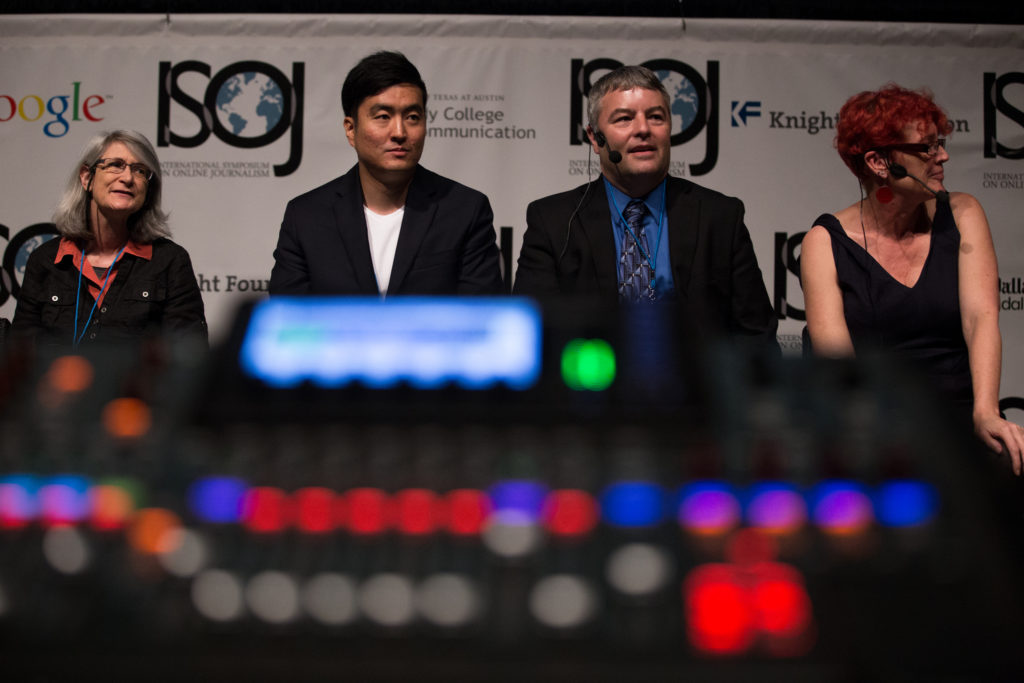April 18, 2015 | Engagement, Research
Researchers at ISOJ analyze international attempts at news engagement
The multiple ways through which audiences can engage with news content was the topic debated during the research panel that closed the first day of the International Symposium on Online Journalism (ISOJ) on Friday.

Titled “Influence, consumption and participation: Paths to news engagement,” the panel presented research conducted by scholars from Australia, England, and the United States related to political coverage and participation, archives and memory, and news commenting.
Prof. Jane Singer, from the City University London, England, presented her 12-year study named “Leaning conservative: Innovation and presidential campaign coverage by U.S. newspaper websites in the digital age.” She analyzed the U.S. presidential campaign coverage of 2000, 2004, 2008, and 2012 by major online newspapers in order to understand how editors incorporated changing technologies and user capabilities.
“What mattered most to online editors remained their own expanding capability to provide traditional political information to the readers. Innovations were adopted each year, but the way of thinking didn’t change,” Singer said.
From the University of Texas at Austin, Joseph Yoo presented the research he conducted with Pei Zheng, Hyeri Jung, Vickie Chen, Shuning Lu, and Thomas Johnson, titled “Tap, scroll down, chat and more? Examining the influence of mobile applications and interpersonal discussions towards political participation.” He explained that the use of mobile phone technology for political purposes has become more common because of three factors: low cost, easiness, and portability.
“We believe that news media companies still have to develop more mobile news applications in order to elicit more engagement among audiences,” Yoo said.
Terry Britt, also from the University of Texas at Austin, talked about “Back and forth in time: Online news archives and presence as transportation.” He said he was amazed by how much of the past you can find online, including TV stories from many decades ago.
One example comes from CBSNews.com marking the 50th anniversary of John F. Kennedy’s assassination by presenting an online video of the network’s breaking coverage in 1963.
“The past becomes available through new media. And archive building, local and global, is continuously expanding,” Britt says.
Dr. Fiona Martin, from the University of Sydney, Australia, presented her research “Getting my two cents worth in: Access, interaction, participation and social inclusion in online news commenting.” Analyzing how easy it is to comment on media websites from different countries (Australia, the United States, and the United Kingdom), she found that 55 percent had in-house comments, 32.5 percent allowed comments only in social media, and 12.5 percent had payment policies.
“It called my attention to the fact that women, or female-identified users, were only 20 percent of the commenters. One possible explanation for this is that commenting is risky because the person may be a victim of abuse,” Martin says.
This 16th annual edition of ISOJ, which continues Saturday at the Blanton Museum of Arton the campus of the University of Texas at Austin, is being livestreamed in English here, and in Spanish here.
ISOJ 2015: Research Influence Q&A, from Knight Center on Vimeo.

